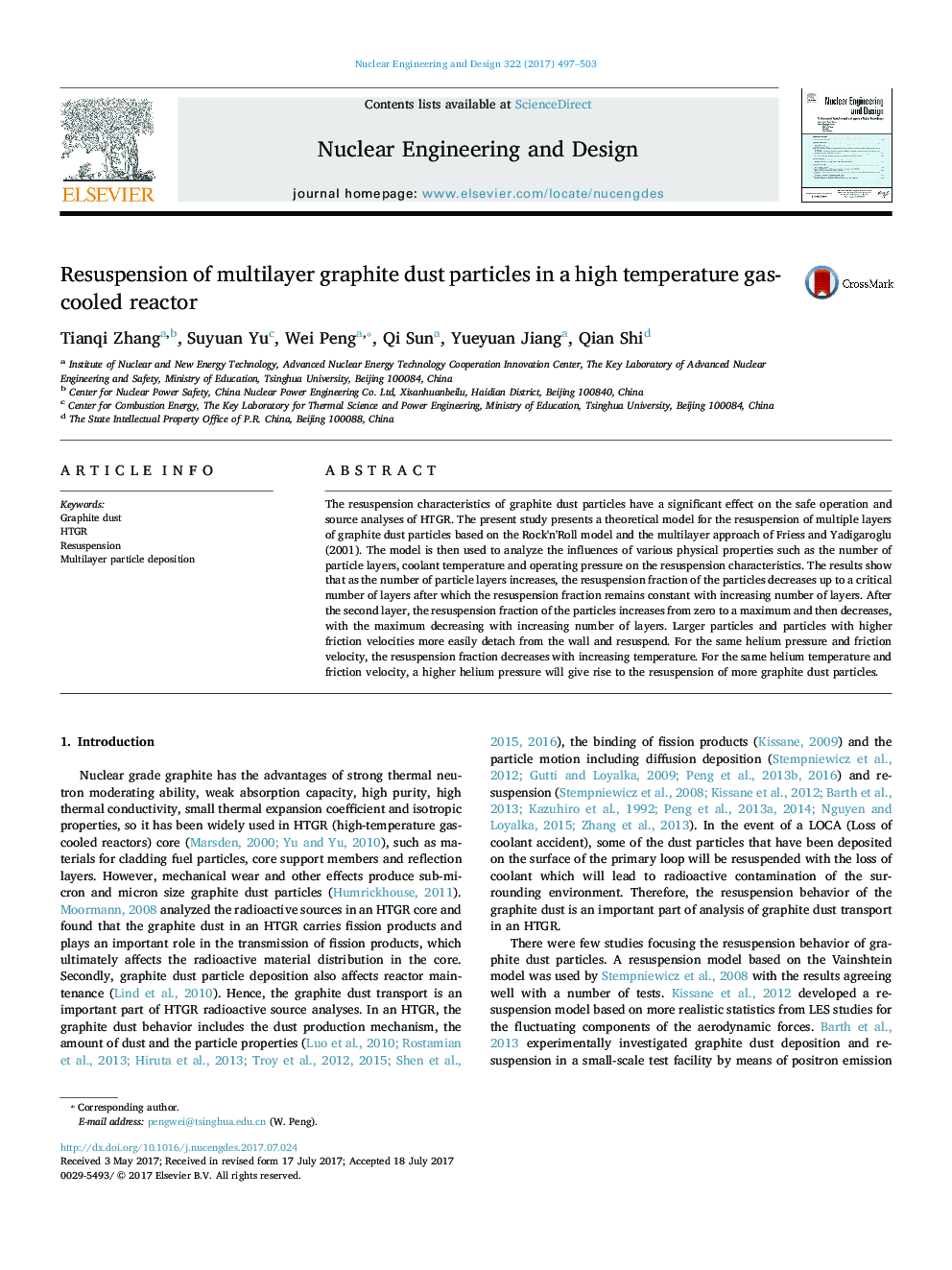| Article ID | Journal | Published Year | Pages | File Type |
|---|---|---|---|---|
| 4925295 | Nuclear Engineering and Design | 2017 | 7 Pages |
Abstract
The resuspension characteristics of graphite dust particles have a significant effect on the safe operation and source analyses of HTGR. The present study presents a theoretical model for the resuspension of multiple layers of graphite dust particles based on the Rock'n'Roll model and the multilayer approach of Friess and Yadigaroglu (2001). The model is then used to analyze the influences of various physical properties such as the number of particle layers, coolant temperature and operating pressure on the resuspension characteristics. The results show that as the number of particle layers increases, the resuspension fraction of the particles decreases up to a critical number of layers after which the resuspension fraction remains constant with increasing number of layers. After the second layer, the resuspension fraction of the particles increases from zero to a maximum and then decreases, with the maximum decreasing with increasing number of layers. Larger particles and particles with higher friction velocities more easily detach from the wall and resuspend. For the same helium pressure and friction velocity, the resuspension fraction decreases with increasing temperature. For the same helium temperature and friction velocity, a higher helium pressure will give rise to the resuspension of more graphite dust particles.
Keywords
Related Topics
Physical Sciences and Engineering
Energy
Energy Engineering and Power Technology
Authors
Tianqi Zhang, Suyuan Yu, Wei Peng, Qi Sun, Yueyuan Jiang, Qian Shi,
